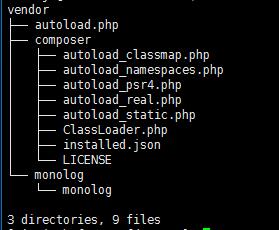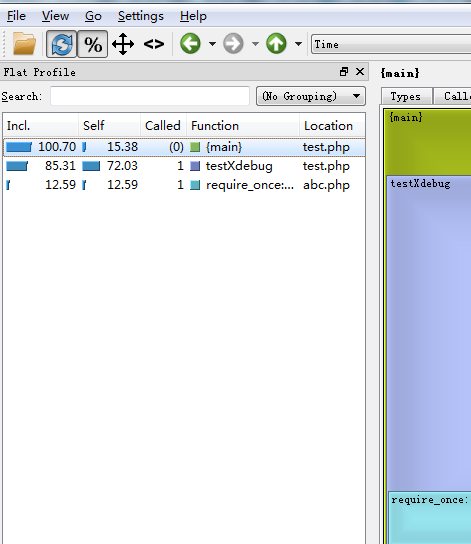Welcome to GongMH's Blog!
keep study.-
php数组json后是数组还是对象问题
在最近项目中,前后端联调的时候php接口返回数组json后的数据,有时候是数组,有的时候却是对象,导致前端解析的时候总是抱怨数据问题。今天就对这个问题进行梳理。(已解决,json_encode时设置JSON_FORCE_OBJECT选项即可。)
一、JSON介绍
1. JSON概念
json是一种轻量级的数据交换文本格式。
2. JSON数据结构rfc4627
2.1 对象(object)
一个对象以{开始,并以}结束。一个对象包含一系列非排序的名称/值对,每个名称/值对之间使用,分区。例如:{name:value}2.2 名称/值(collection)
名称和值之间使用:隔开,一般的形式是{name:value}。2.3 值的有序列表(Array)
一个或者多个值用,分区后,使用[,]括起来就形成了列表,例如:[collection, collection]2.4 字符串
以"、"括起来的一串字符.2.5 数值
一系列0-9的数字组合,可以为负数或者小数。还可以用e或者E表示为指数形式。2.6 布尔值
用true或者false表示。二、php中json_encode的表示
Note: When encoding an array, if the keys are not a continuous numeric sequence starting from 0, all keys are encoded as strings, and specified explicitly for each key-value pair. – via php manual
也就是说php的数组做json_encode的时候,只有数组的下标是从0开始的连续整数,才会json为列表形式;其他情况都是对象形式。
因此,针对php数组json_encode时,需要数组形式的话就重新排序一下数组即可。
当对php的数组进行json_encode的时候,可以设置option为JSON_FORCE_OBJECT,即可强制设置编码为JSON的对象。
string json_encode ( mixed $value [, int $options = 0 [, int $depth = 512 ]] )JSON_FORCE_OBJECT (integer) Outputs an object rather than an array when a non-associative array is used. Especially useful when the recipient of the output is expecting an object and the array is empty. Available since PHP 5.3.0.
-
php常用功能函数总结
- 一、数组相关:
- 1. 数组获取key(array_keys)
- 2. 数组获取value(array_values)
- 3. 两个数组合并(+)
- 4. 两个数组合并(array_merge)
- 5. 两个数组合并(array_combine)
- 6. 取出数组第一个key对应的value(array_shift)
- 7. 取出二维数组指定的列(array_column)
- 8. 数组的值进行unique(array_unique)
- 9. 数组替换(array_replace)
- 10. 数组中所有value之和(array_sum)
- 11. 用户自定义数组排序(usort)
- 12. 数组中所有值出现次数(array_count_values)
- 13. 数组填充(array_fill)
- 14. 数组去重(array_flip)
- 二、字符串相关
- 三、其他
一、数组相关:
1. 数组获取key(array_keys)
$arr = array( 'a' => 'first', 'b' => 'second', 'c' => 'third', 'd' => 'fourth', ); print_r(array_keys($arr)); // Array // ( // [0] => a // [1] => b // [2] => c // [3] => d // )2. 数组获取value(array_values)
$arr = array( 'a' => 'first', 'b' => 'second', 'c' => 'third', 'd' => 'fourth', ); print_r(array_values($arr)); // Array // ( // [0] => first // [1] => second // [2] => third // [3] => fourth // )3. 两个数组合并(+)
$arr = array( 'a' => 'first', 'b' => 'second', 'c' => 'third', 'd' => 'fourth', ); $newarr = array( 'd' => '4th', 'e' => '5th', ); print_r($arr + $newarr); // Array // ( // [a] => first // [b] => second // [c] => third // [d] => fourth // [e] => 5th // )注意:两个数组key相等时,第二个数组不会覆盖第一个数组的value
4. 两个数组合并(array_merge)
$arr = array( 'a' => 'first', 'b' => 'second', 'c' => 'third', 'd' => 'fourth', ); $newarr = array( 'd' => '4th', 'e' => '5th', ); print_r(array_merge($arr, $newarr)); // Array // ( // [a] => first // [b] => second // [c] => third // [d] => 4th // [e] => 5th // )注意:两个数组key相等时,第二个数组会覆盖第一个数组的value
5. 两个数组合并(array_combine)
$arr = array( 'a' => 'first', 'b' => 'second', // 'c' => 'third', // 'd' => 'fourth', ); $newarr = array( 'd' => '4th', 'e' => '5th', ); print_r(array_combine($arr, $newarr)); // Array // ( // [first] => 4th // [second] => 5th // )注意:两个数组的元素个数要一致
6. 取出数组第一个key对应的value(array_shift)
$arr = array( 'a' => 'first', 'b' => 'second', 'c' => 'third', 'd' => 'fourth', ); print_r(array_shift($arr)); // first7. 取出二维数组指定的列(array_column)
$a = array( array( 'id' => 5698, 'first_name' => 'Bill', 'last_name' => 'Gates', ), array( 'id' => 4767, 'first_name' => 'Steve', 'last_name' => 'Jobs', ), array( 'id' => 3809, 'first_name' => 'Mark', 'last_name' => 'Zuckerberg', ) ); print_r(array_column($a, 'last_name')); // Array // ( // [0] => Gates // [1] => Jobs // [2] => Zuckerberg // )注意:php版本要5.5+
8. 数组的值进行unique(array_unique)
$arr = array( 'a' => 'first', 'b' => 'second', 'c' => 'third', 'd' => 'fourth', 'e' => 'fourth', ); print_r(array_unique($arr)); // Array // ( // [a] => first // [b] => second // [c] => third // [d] => fourth // )注意:当几个数组元素的值相等时,只保留第一个元素,其他的元素被删除。
9. 数组替换(array_replace)
$arr = array( 'a' => 'first', 'b' => 'second', 'c' => 'third', 'd' => 'fourth', ); $newarr = array( 'd' => '4th', 'e' => '5th', ); print_r(array_replace($arr, $newarr)); // Array // ( // [a] => first // [b] => second // [c] => third // [d] => 4th // [e] => 5th // )注意:如果一个键存在于第一个数组 array1 同时也存在于第二个数组 array2,第一个数组 array1 中的值将被第二个数组 array2 中的值替换。如果一个键仅存在于第一个数组 array1,它将保持不变。如果一个键存在于第二个数组 array2,但是不存在于第一个数组 array1,则会在第一个数组 array1 中创建这个元素。php版本5.3.0+
10. 数组中所有value之和(array_sum)
$arr = array( 'a' => '1', 'b' => '2', 'c' => '3', 'd' => '4', ); print_r(array_sum($arr)); // 1011. 用户自定义数组排序(usort)
$arr = array( 'a' => '3', 'b' => '2', 'c' => '2', 'd' => '4', ); function my_sort($a,$b) { if ($a==$b) return 0; return ($a<$b)?-1:1; } usort($arr,"my_sort"); print_r($arr); // Array // ( // [0] => 2 // [1] => 2 // [2] => 3 // [3] => 4 // )12. 数组中所有值出现次数(array_count_values)
$arr = array( 'a' => '3', 'b' => '2', 'c' => '2', 'd' => '4', ); print_r(array_count_values($arr)); // Array // ( // [3] => 1 // [2] => 2 // [4] => 1 // )13. 数组填充(array_fill)
print_r(array_fill(3, 6, 'filled')); // Array // ( // [3] => filled // [4] => filled // [5] => filled // [6] => filled // [7] => filled // [8] => filled // )14. 数组去重(array_flip)
$arr = array( 'a' => 'first', 'b' => 'second', 'c' => 'third', 'd' => 'fourth', 'e' => 'fourth', ); print_r(array_flip(array_flip($arr))); // 注意与array_unique的区别 // Array // ( // [a] => first // [b] => second // [c] => third // [e] => fourth // ) print_r(array_unique($arr)); // Array // ( // [a] => first // [b] => second // [c] => third // [d] => fourth // )注意:函数返回一个反转后的数组,如果同一值出现了多次,则最后一个键名将作为它的值,所有其他的键名都将丢失。
二、字符串相关
1. implode
2. explode
3. strstr
4.
三、其他
- array_sum(unpack(‘C*’, $metric)
- 一、数组相关:
-
mac出现bogon问题
问题引出:
在mac本机启动java web的时候,出现下面报错:
错误: 代理抛出异常错误: java.net.MalformedURLException: Local host name unknown: java.net.UnknownHostException: bogon: bogon: nodename nor servname provided, or not known原因:
mac的终端会先向DNS查询当前ip对应的反向域名解析的结果,如果查询不到再显示我们设置的计算机名。由于DNS服务错误地将保留地址反向的NS查询结果返回为bogon(虚拟、虚伪),而不是localhost,导致计算机名变成了bogon,又导致程序出错。
解决方法:
方法一:
设置hostname
sudo hostname your-desired-host-name sudo scutil --set LocalHostName $(hostname) sudo scutil --set HostName $(hostname)方法二:
设置DNS为
8.8.8.8。
-
PHP依赖管理工具 Composer
1. 介绍
Composer是PHP的依赖管理工具。我们只要声明项目中依赖的代码库,Composer能自动帮我们下载安装。
2. 安装
安装Composer,并且安装到全局目录中。
$ curl -sS https://getcomposer.org/installer | php $ mv composer.phar /usr/local/bin/composer这样就能直接使用composer命令。
$ composer3. 使用
3.1 创建
composer.json文件在项目根目录中创建
composer.json文件{ "require": { "monolog/monolog": "1.0.*" } }3.2 执行composer安装依赖
在项目根目录执行命令:
$ composer installcomposer会自动帮我们下载依赖,结构如下:

这时我们的项目中还会出现composer.lock文件,composer.lock文件中记录着依赖的版本号等信息。我们需要将该文件也提交到我们代码库中,这样任何人建立项目都是用的完全相同的依赖。3.3 使用已安装的库
composer会自动帮我们生成
vendor/autoload.php文件。我们只需引入这个文件,就能自动加载相应的库。require 'vendor/autoload.php';在项目中,我们就可以直接使用相应的库功能。
$log = new Monolog\Logger('name'); $log->pushHandler(new Monolog\Handler\StreeamHandler('app.log', Monolog\Logger::WARNING)); $log->addWarning('Foo');4. 总结
composer是php的依赖管理工具,本文简单介绍其基本使用,更多内容请阅读官方文档。
-
生产环境中问题记录
在实际的生产环境中,各个系统都独立部署。系统间通过RPC调用,与单机环境有很多不同的地方。本文记录一些常见的case,希望对以后的开发中规避这些问题。
1. 数据库主从延时问题
有些场景下,我们需要先更新数据库然后读出数据再进行其他操作,这种在单机环境中不会有任何问题。但是实际生产环境数据库的部署是分主从的,主库用来更新操作,从库主要承担读的压力。数据库请求到来的时候,数据库上层有一个proxy,根据sql语句分发请求分别到主、从库。但是数据从主库同步到从库是有一定的时间间隔的,这个间隔从毫秒级到秒级都有可能,因此业务逻辑中要规避这种情况。
解决方案:
* 业务中规避先写再读的case,尽量通过程序控制先读再写。
* 对于必须要求先写再读的业务逻辑,可以联系dba,让这部分的读分发到主库。2. php curl的毫秒级超时问题
php业务中对外请求时,我们会设置超时时间,如果是秒级的超时,我们这样设置是没问题的:
$timeout = 2; //2s超时 curl_setopt($ch, CURLOPT_CONNECTTIMEOUT, $timeout); //连接超时 curl_setopt($ch, CURLOPT_TIMEOUT, $timeout); //处理超时但是实际业务中常常需要设置毫秒级的超时时间,例如
$timeout = 0.1;//100ms超时再用上面的语句就会有问题了,你会发现超时时间根本没起作用。原因见 Curl的毫秒超时的一个”Bug”。如果需要毫秒级超时,必须设置CURLOPT_NOSIGNAL参数。$timeout = 0.1;//100ms超时 curl_setopt($ch, CURLOPT_NOSIGNAL, true); curl_setopt($ch, CURLOPT_CONNECTTIMEOUT_MS, $timeout * 1000); curl_setopt($ch, CURLOPT_TIMEOUT_MS, $timeout * 1000);
-
PHP扩展--xdebug
xdebug是一个开源的php代码调试工具,支持运行时栈输出,运行时函数调用跟踪,代码覆盖率分析,性能数据采集以及内部状态显示
1.下载安装xdebug
在xdebug下载页,我们选择合适的版本进行安装,本文使用centos系列。
- 下载源码
$ wget http://xdebug.org/files/xdebug-2.3.3.tgz - 解压安装
$ tar zxvf xdebug-2.3.3.tgz $ cd xdebug-2.3.3 $ phpize $ ./configure $ make && make install
2.配置xdebug
修改php.ini文件
[Xdebug] xdebug.profiler_enable=On xdebug.trace_output_dir=/YOU_WANT_TO_SAVE_PATH/xdebug-output xdebug.profiler_output_dir=/YOU_WANT_TO_SAVE_PATH/xdebug-outputweb服务需要重启php-fpm
3.使用xdebug
现在每次调用php脚本,就会自动在
YOU_WANT_TO_SAVE_PATH/xdebug-output生成相应的新能数据文件。4. 分析性能文件
性能文件可以使用专门的工具(win/mac下可以使用QCacheGrind,linux下可以使用KCacheGrind)。以QCacheGrind为例,界面左侧”Flat Profile”展示函数调用列表,
Incl.包括子函数的调用时间,Self为去除子函数后自身消耗的时间。5. 示例
示例代码
//test.php <?php testXdebug(); function testXdebug() { require_once('abc.php'); } //abc.php <?php echo "hello";profile分析效果:

5. 扩展资料
- xdebug文档
xdebub-doc - 360开源的PHP分析工具
phptrace
- 下载源码